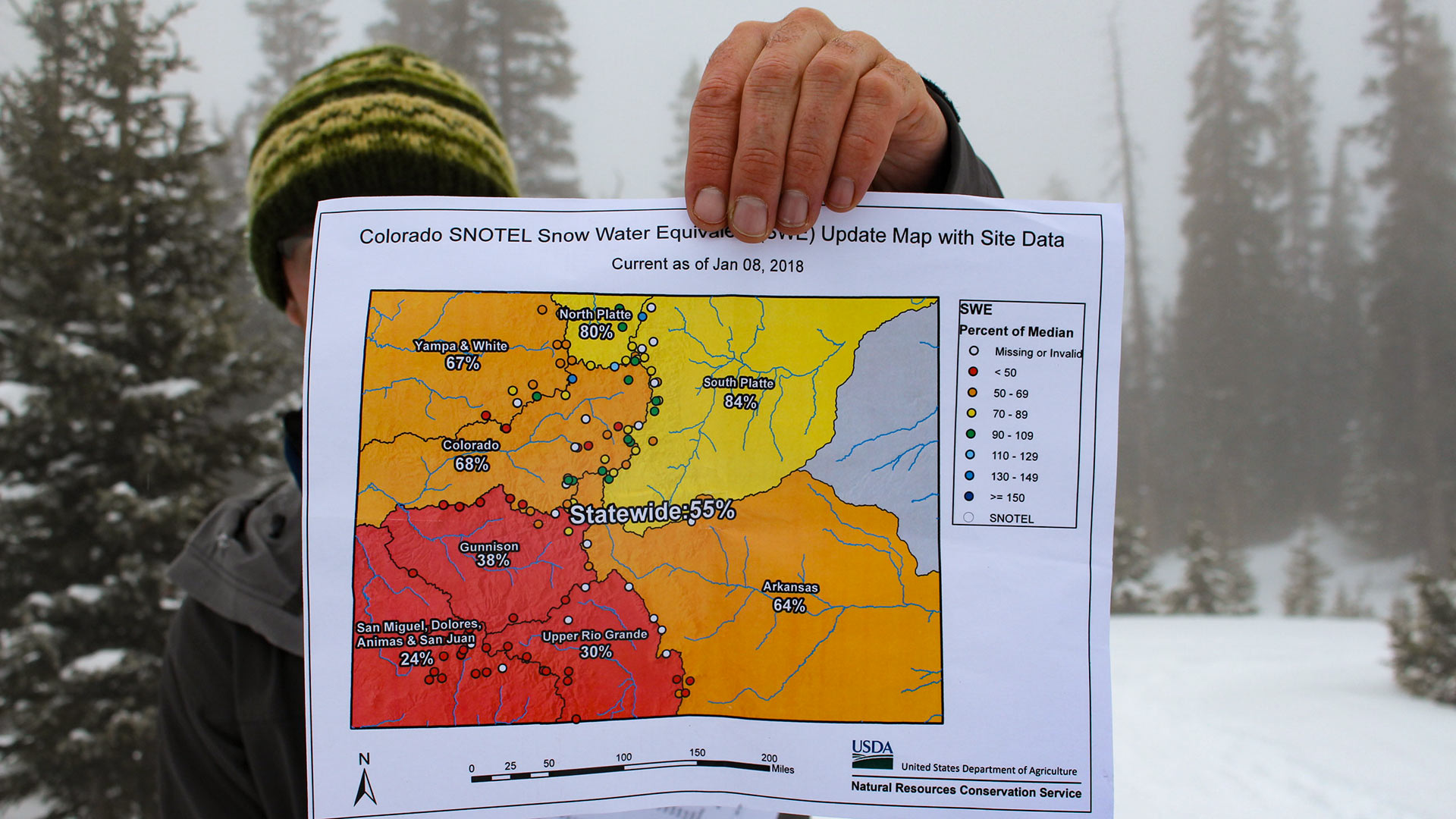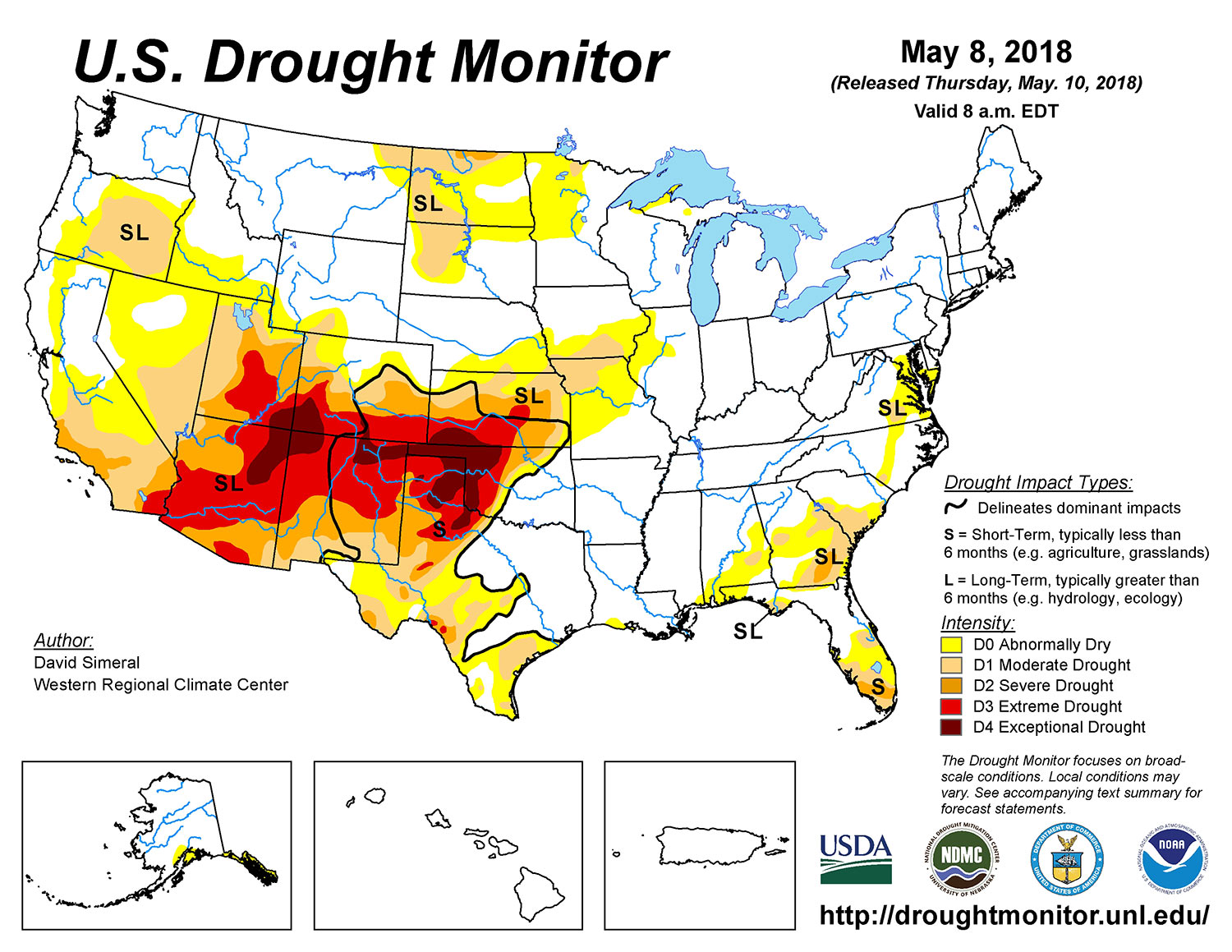 Hydrologist Karl Wetlaufer with the Natural Resources Conservation Service holds a map showing Colorado's low snowpack on Jan. 9, 2018.
Hydrologist Karl Wetlaufer with the Natural Resources Conservation Service holds a map showing Colorado's low snowpack on Jan. 9, 2018.
A new study from NASA reinforces the idea that droughts are getting worse and could become more frequent in the Western U.S.
The culprit is human-caused climate change.
Droughts aren’t just about precipitation, says NASA scientist and the study’s co-author, Benjamin Cook. They’re also about the timing of snowmelt and the wetness of soil, both of which are upended by a warming climate.
In a landmark 2014 study from the Intergovernmental Panel on Climate Change, scientists could not say with confidence that climate change was affecting droughts around the world. Since that report was published, the picture has become clearer, Cook says.
“We have pretty clear evidence now that climate change has already begun to make droughts worse or more likely in at least some regions,” he says. “So it’s a now problem, not a future problem.”
 VIEW LARGER A drought map with data valid for May 8, 2018, showing areas of extreme drought expanding in certain parts of Arizona and New Mexico.
VIEW LARGER A drought map with data valid for May 8, 2018, showing areas of extreme drought expanding in certain parts of Arizona and New Mexico. Definitions of drought vary. A meteorological drought happens when snow and rain are diminished. An agricultural drought is tied to soil moisture and can be influenced by the type of soil and the crops and vegetation grown. A hydrological drought refers to lessened runoff from snow, which in turn means less water ending up in surface reservoirs.
This range of definitions can make it difficult to talk about droughts in a general way around the world and difficult for scientists to quantify the effects of a particular dry period.
In the western U.S., snow provides a critical water supply for cities, farmers and recreationalists. If it’s too warm, snow turns to rain and evaporates faster, Cook says.
“The wrong question is: Did climate change cause this event? Did climate change cause this drought?” Cook says. “The correct question is: Did climate change make this drought worse than it would’ve been normally? Or did climate change make this event more likely to happen than it would’ve been?”
“The correct question is: Did climate change make this drought worse than it would’ve been normally? Or did climate change make this event more likely to happen than it would’ve been?”
Cook cites studies that show recent droughts in California and the Colorado River Basin have climate change’s fingerprints all over them. Without major changes to greenhouse gas emissions, Cook says climate models show the future will bring more of the same.
This story is part of a project covering the Colorado River, produced by KUNC and supported through a Walton Family Foundation grant. KUNC is solely responsible for its editorial content.

By submitting your comments, you hereby give AZPM the right to post your comments and potentially use them in any other form of media operated by this institution.